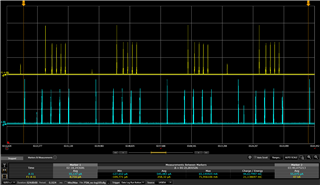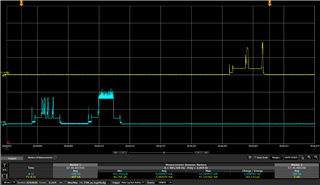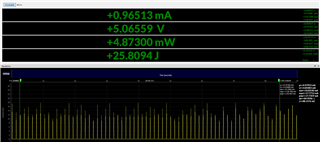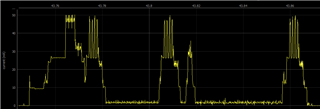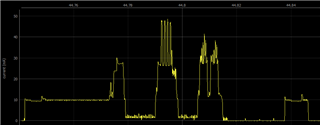Hello!
We are trying to get low average current consumption on the nRF9160 DK without success.
The floor current between modem active time is ~60uA, which is fine. But the average current when connected to the network (idle, no TCP/UDP data exchange) is high: ~1.9mA for Cat-M1.
For the Cat-M1 network we have not been able to get eDRX. The modem is active (measured on COEX2 pin) every 640ms and stays active for 48ms (see attached image).

If the cell/network does not provide eDRX is there no way for us to increase the intervals and lower the power (alter DRX?)?
We have also tried NB-IOT with these settings and result:
eDRX 0011 (40.96s) default PTW (0011): ~1.2mA
eDRX 0011 (40.96s) PTW override 0000: ~0.38mA

See attached image of NB-IOT modem duty cycle. Is the waveforms as expected? It seems the radio is active a lot of the time in both Cat-M and NB-IOT and thus drawing a lot of power?
We are connected to Telia network in Linköping, Sweden. We have tried both native Telia iot SIM and iBasis SIM.
Modem firmware: 1.1.0
Application is minimal, just LTE initialization using your code.
We were hoping for current well below 1mA with eRDX/DRX of 5-10sec and sending small amount of data (20-40 byte) to nRF9160 every 1-2min or so.
You have previously published expected current consumption of ~0.5mA @ 3.7V when sending tracking information every 20s (DRX) on Cat-M. How can we achieve this?
Could you provide a precompiled binary or source code with an example that is connected to the network and consume low power on average? We need to see that it is possible, otherwise we might have to consider other modem chips.
Is there some other commands we need to perform to get lower power? We don't see any difference with AT+CEPPI=1.
On a sidenote: When running AT+COPS=? we found 3 networks: Telia, Tele2, Telenor. However, we are only able to connect to Telia with iBasis, is this as expected?
Any help is appreciated.
Thank you in advance.
Best regards
Mattias




